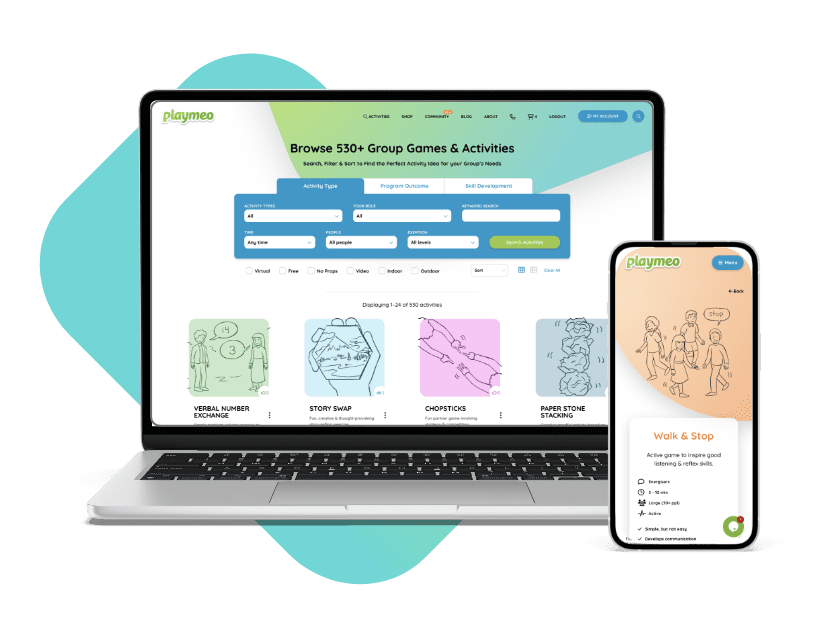Okay. Are you ready? You’re going to need pen and paper.
They’re going to come thick and fast with lots of ideas. And I promise you at the end of this, you’re going to have 20, 30 or more different ways of being able to take your large group and form small groups.
Let’s start with crossing your arms. You can do it right now. Cross your arms in front of you. What do you notice? Which arm is crossed over the other? So I’m going to start first of all, with a set of two team splits.
There are many activities where you just need two possibly even splits. This is a great one because generally speaking, the population falls into 50% with their left arm over their right, or I’ve now changed their right arm over their left. And if it doesn’t work out even, then just move a few people around if you needed to from a random perspective.
Another unique two-team split is to ask people their preference for cooking or cleaning. Most people fall into one of those two categories. You can’t sit on the fence.
You may not get an even number of people. You can always swap a few people over, but generally it can be a 50-50 split.
You could consider a set of favourites or even pets as to which one do you prefer? So are you a cat person or a dog person? Tea or coffee? Hot beverage, cold beverage? Do you prefer to stay at home or go out? Go to the movies or sit at home and watch Netflix? There’s lots and lots of ways, categories you can get a fairly even half-half split.
And again, move a few people around if you really do need an even number of people.
Odds and evens. So many numbers that rule our world. Think of the last digit of your mobile phone or your cell phone or your street address or your security number or your credit card. Whatever. Find the last number and then divide up according to the odd numbers and the even numbers.
Surprisingly, for an even split for two teams. How about good news, bad news? Most people fall into one of two categories and it sounds a bit like this. When someone comes up to you and says, I’ve got some good news, I’ve got some bad news.
Which do you prefer to take first? The good news followed by the bad or the bad followed by the good?
It could be as simple as just looking at the first letter of your first name, middle name or last name and dividing up according from A to K and then L to Z, for example. That tends to be a fairly even split. Of course, that might depend on where in the world you are and of course, the names of the people you’re with as well.















Thanks for sharing so many clever ideas! I like to ask participants to find a partner who has the same thumb length they have, or same hair length (or even opposite lengths). I sometimes use a deck of cards and ask same suits to get together or same numbers (this takes pre-planning to get the right amount of cards ready).